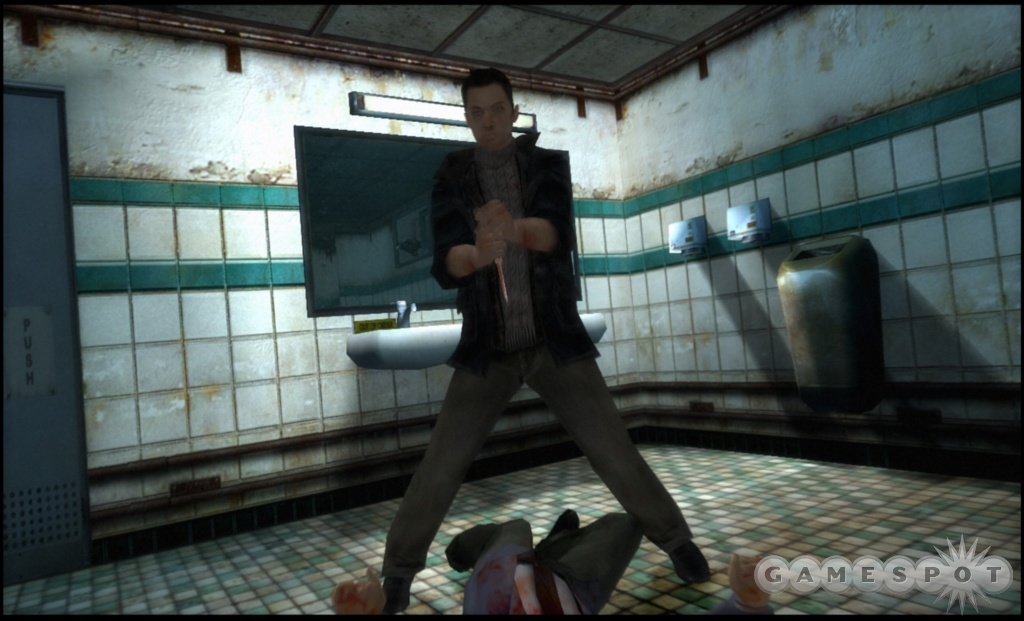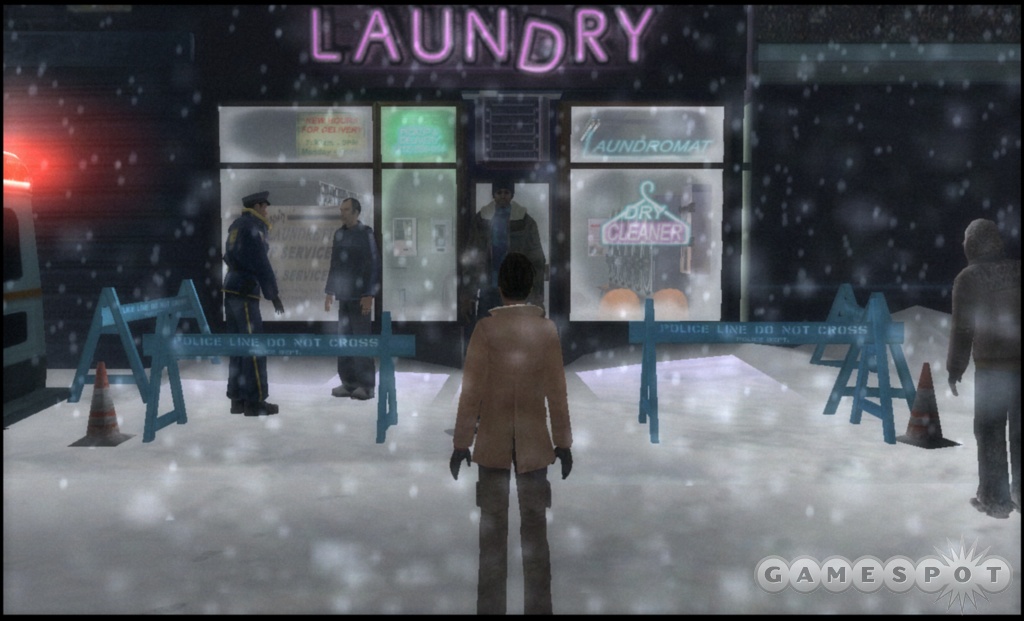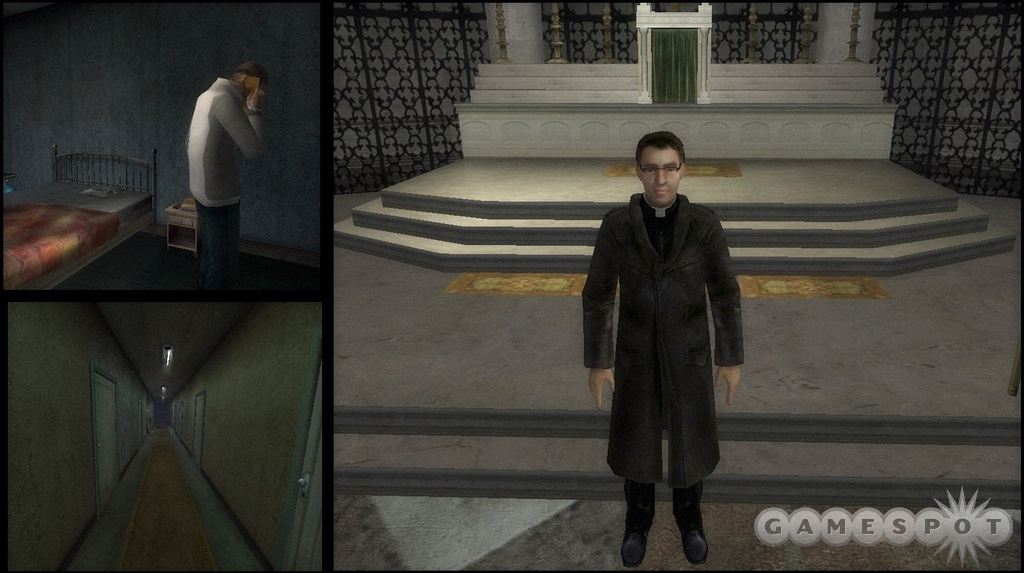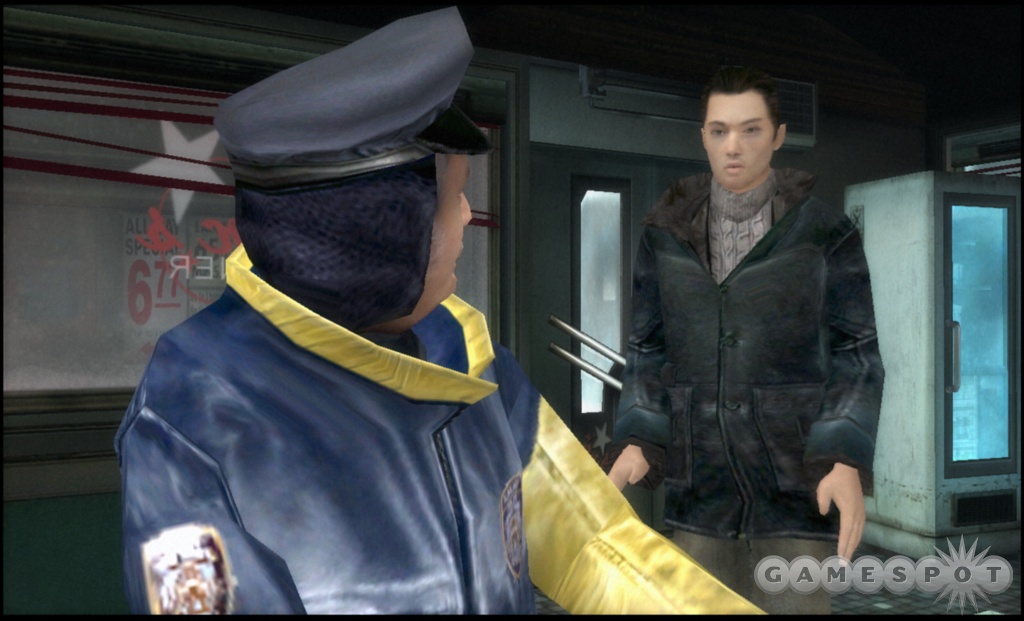Indigo Prophecy Preview
We immerse ourselves in the mystery of Indigo Prophecy.
Indigo Prophecy stands out among a crowd of upcoming titles as both a welcome representative of the elusive adventure genre, and a unique example of a free-flowing cinematic experience that gives the player many ways to alter the story. After spending time with the PS2 version of the game, we continue to be entranced by the way events unfold, and the level of detail and thought that's gone into crafting the world, the tale, and how players get directly involved in it all. Indigo Prophecy definitely seems to be progressing nicely, and our hands-on time has shed some light on a few of the particulars of the game's mechanics.
The story of Indigo Prophecy centers first on a single man, Lucas Kane, who lives an ordinary life in the big city with little to set him apart from the crowd. That's until one fateful night at a diner, when Lucas enters a trance in the men's room and brutally stabs a fellow patron to death. He comes to his senses covered in blood, a dead body at his feet, a murder weapon in his hand, and no idea why any of it happened. You'll assume control of Lucas, and from that point onward you're immersed in the mystery of the strange killing. You'll get to see the story from many angles, as you'll play a variety of characters, including the tenacious police detective Carla Valenti, her easygoing partner, Tyler Miles, and Lucas' religious brother, Marcus. How you handle the characters and the choices they have to make as they go along will affect the overarching story, as well as how each scene plays out.

The controls are pretty streamlined, with the left analog stick used for moving characters around, and the right analog stick used for interacting with objects. As you walk around and come close to objects you can manipulate, a small icon guide appears at the top of the screen, showing a picture of each option, as well as a direction to press. For example, in the initial restroom scene, you can walk up to a sink and press down on the right analog stick to make Lucas use it--which in turn causes him to rinse the blood off his hands and clothes to make himself more presentable and less homicidal-looking. Walking near the knife on the ground and pressing left will cause Lucas to pick it up and then look for a place to hide the weapon. There's no inventory system in the game, and no menus to page through. If you pick up a key to open a door, you'll simply use the key when you interact with the door. It's a refreshingly simple system, though things get a little more involved during action sequences.
When things get more heated and your character has to pull off some fancy moves, the controls change from a hands-on system to something the designers call the Physical Action Reaction (PAR) system. It's analogous to Shenmue's quick time events, where you'll have to press directions on the left and right analog sticks at the right times to successfully complete the event. A guide appears in the middle of the screen that flashes the necessary motions before you have to press them. They can move pretty fast, but there's a sort of automatic checkpoint feature that goes along with the story-based action bits, so if you flub up near the end, you won't have to replay the entire thing.

PAR is also used for other events that aren't critical to your mission. We had Lucas pick up his guitar and strum a few tunes in his apartment. Mangling the strings didn't have any adverse effect, but plucking out a nice song improved his mood. During an autopsy scene with Carla, the doctor would explain the wounds, and pulling off the PAR event successfully let Carla infer things about the crime using the information she'd just heard. The two shoulder buttons are also used for certain areas where you'll have to alternately mash them to accomplish some sort of physical feat, like struggling out of the arms of a would-be assailant.
Unraveling the Mystery
For the number of ways there are to interact with characters and their environments in Indigo Prophecy, there's an equal number of ways for you to change how the story unfolds. In the game's opening act, you can run out of the restroom bloody, leaving the murder weapon on the floor and evidence all over the room, which causes the patrons to remember you, and makes Carla and Tyler's investigation much easier in the next act. Or you can clean yourself up, drag the body into a stall, mop up the blood on the floor, hide the weapon, walk calmly into the diner, pay your bill, and leave. The waitress will take no special notice of you, and while you'll still be sought as the perpetrator, you'll leave far less of an evidence trail behind you. When the waitress reports to the police station in a later scene to help with a sketch of the killer, she'll be far less specific in her descriptions.

We were also able to affect our story in other ways while playing. At one point in the game, we had Lucas alone in his apartment, waiting for his ex-girlfriend to come over and collect some things. A perusal of the kitchen found a bottle of liquor under the counter, and we let Lucas take a few swigs. He then wandered into his bedroom, and a search of the table by his bed revealed a bottle of pills. Unthinkingly, we had him swallow them. And then Lucas slumped to the floor, the narration explaining how a combination of medication and alcohol ended his story for good. It was easy enough to restart that particular chapter of the game, and it only made us more interested in the variety of trouble we could make our characters get into. With the many options open to players and the subtle and major ways you can cause events to shift, we were tempted to play particular scenes over and over again in different ways just to see what would happen.
Conversations in the game work on a modified version of the normal control route. Pressing a directional button lets you choose a specific dialogue choice, but a timer moves along the screen at the same time. You'll have to quickly choose which branches you want to follow, change the information you're able to gather, and sometimes change the options that you have available to you. You can befriend or alienate other characters, which also subtly shifts how matters unfold in later chapters. The developers at Quantic Dreams have stated that they're going for a cinematic game that's involving to watch, while simultaneously giving players plenty of control. And it seems so far that they're definitely on the right track. The feeling we got while playing was that everything was meticulously scripted, but we had influence on the ultimate path and what we could unlock to explore along the way--a more organic experience than simply watching a film.
The characters in the world have a great deal of personality and a wide range of expression and motion that really brings them to life. Carla's smiles are warm and friendly, and Lucas looks serious and suitably pained as he fights to make sense of his situation. The people and the environments are fairly well detailed, and considering how much voice work is in the game, the lip-synching also looked good. The game's camera could be a bit troublesome in corners, but you can use the right shoulder buttons to quickly adjust the view, as well. The sound in the version we played was not final, but the various effects and such that we encountered seemed to be a good fit (the final version of the game will be scored by Angelo Badalamenti). The speech is delivered earnestly and without the use of dramatic hyperbole, and there was a good, natural-sounding flow to it.

Presenting a fully featured cinematic story while at the same time giving players freedom to shape that story as they see fit is a tall order, but it looks like Indigo Prophecy handles it well. Fans of the adventure genre should keep their eyes on the evolution of this title--we certainly will! You'll be able to finally solve Indigo Prophecy's murder mystery sometime this fall, when the game is released on the PlayStation 2, Xbox, and PC. In the meantime, keep your eyes close to this gamespace.
Got a news tip or want to contact us directly? Email news@gamespot.com
Join the conversation